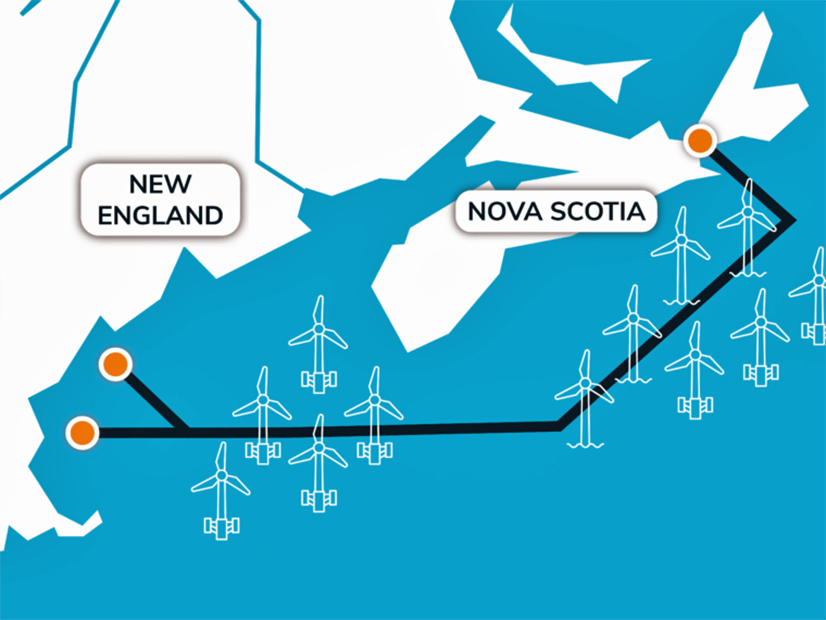
An industry coalition is promoting the concept of underwater transmission linking New England and Nova Scotia with each other via wind farms off their respective coasts.
The shared infrastructure, they say, would help both regions meet their climate-protection goals in the coming decades.
The New England-Maritimes Offshore Energy Corridor last week released a report on the concept prepared by risk-management company DNV and electric consulting firm Power Advisory.
It is not a business case for building such a power line; it was intended to show its potential benefits, rather than quantify them.
But the benefits would be spread among multiple parties, the report’s authors write, so for a proposal to attract investment, they must be quantified and recognized in the cost-allocation process.
The long, windy coast of New England is expected to play a critical part in that region’s clean energy drive, with Massachusetts alone targeting 5,600 MW by 2027 and other states hoping developers will install thousands more megawatts.
Nova Scotia’s provincial government wants to offer leases for 5 GW of OSW between 2025 and 2030 to support its budding green hydrogen industry.
Transmission between the two sets of offshore wind arrays could both enhance grid reliability and provide economic benefits, the authors said. Nova Scotia turbines could export to ISO-NE during high-priced hours, and wind turbines in the Gulf of Maine could export to Nova Scotia to reduce curtailment.
Weighing against this are multiple challenges: the multijurisdictional permitting of such a line, its non-traditional value proposition and its significant cost: High-level price estimates range from $6.4 billion to $8.3 billion (USD).
Government financial support would be needed. Meanwhile, the floating turbine technology that would be required in the deep water of the Gulf of Maine is still being developed, and the supply chain to manufacture its components is facing yearslong delays.
-
-
- Atlantic Canada Offshore Development, a joint venture of Copenhagen Investment Partners and Shell Canada to explore the potential for OSW in Canada’s Maritime provinces;
- hydrogen and ammonia developer Bear Head Energy, a subsidiary of BAES Infrastructure;
- Ireland-based renewable energy developer and operator DP Energy;
- floating wind developer Hexicon;
- transmission line developer Grid United;
- Canadian power producer Northland Power; and
- floating offshore wind developer TotalEnergies SBE US, a partnership between TotalEnergies and the Simply Blue Group.
-



